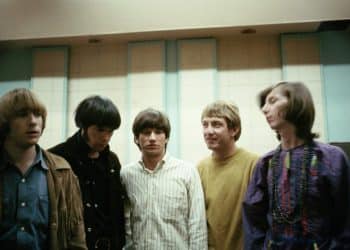Few artists have left a mark on music as profound and enduring as Cat Stevens. With his soul-stirring voice, poetic lyrics, and timeless melodies, Stevens crafted songs that spoke to the heart, exploring themes of love, self-discovery, peace, and change. From the folk anthems of the early ‘70s to his introspective ballads, his music continues to captivate audiences across generations.
Whether you’re a lifelong fan or just discovering his work, this list of Cat Stevens’ top 10 most popular songs will take you on a journey through some of the most iconic and emotionally resonant tracks of all time. These are the songs that defined an era, inspired millions, and remain as relevant today as when they were first released.
From the bittersweet farewell of Wild World to the uplifting call for unity in Peace Train, each of these songs tells a story—one that still echoes in the hearts of listeners worldwide. So, sit back, press play, and let’s celebrate the magic of Cat Stevens’ greatest hits!
Ready to explore his most unforgettable songs? Let’s dive in! 🎶✨
1. Wild World (1970)
“Wild World” is one of Cat Stevens’ most beloved songs, blending folk and pop with deeply emotional storytelling. Featured on his 1970 album Tea for the Tillerman, the song captures the bittersweet emotions of a breakup, as the narrator bids farewell to a former lover while expressing concern for her future. With its flowing acoustic guitar, warm melodies, and Stevens’ heartfelt vocals, “Wild World” perfectly balances melancholy with an irresistible catchiness. Its simple yet profound chorus has resonated with audiences for decades, leading to countless covers by artists across genres. The song’s enduring appeal lies in its universal message—goodbyes are never easy, but they come with love and well-wishes.
2. Father and Son (1970)
Few songs portray generational conflict and familial love as powerfully as Father and Son. Another standout from Tea for the Tillerman, this poignant ballad tells a back-and-forth dialogue between a father who urges his son to follow tradition and a son who longs to forge his own path. Stevens ingeniously distinguishes the two voices, singing in a deeper, authoritative tone for the father and a lighter, more yearning tone for the son. The song’s emotional depth and storytelling have made it a timeless folk classic, resonating with listeners who have faced similar struggles between duty and personal dreams.
3. Morning Has Broken (1971)
A song of renewal and gratitude, Morning Has Broken transforms a 1931 Christian hymn into a breathtaking folk masterpiece. Featured on Teaser and the Firecat, it showcases a stunning piano arrangement by Rick Wakeman of Yes, complementing Stevens’ gentle, reverent vocals. The song celebrates the simple beauty of a new day, making it a favorite at weddings, memorials, and spiritual gatherings. With its poetic lyrics and serene melody, Morning Has Broken stands as one of Stevens’ most uplifting and timeless works.
4. Peace Train (1971)
A song of hope and unity, Peace Train became an anthem for peace movements worldwide. Released on Teaser and the Firecat, its rhythmic, almost hypnotic beat builds toward a soaring, uplifting chorus. Stevens’ lyrics paint a vision of a world where people come together in harmony, a message that remains as relevant today as it was in the early ’70s. The song’s infectious optimism and universal appeal have solidified it as one of his defining tracks, frequently used in campaigns for social justice and change.
5. Moonshadow (1971)
With its whimsical imagery and childlike wonder, Moonshadow is one of Stevens’ most optimistic and uplifting songs. Also from Teaser and the Firecat, it features a simple yet enchanting melody that mirrors its hopeful lyrics. Inspired by a near-death experience, the song reflects on embracing life’s challenges and finding light in darkness. Its playful rhythm and deeply personal yet universal message make it a fan favorite, often regarded as one of his most joyous compositions.
6. The First Cut Is the Deepest (1967)
Before it became a chart-topping hit for artists like Rod Stewart and Sheryl Crow, The First Cut Is the Deepest was written and recorded by Cat Stevens for his 1967 album New Masters. This melancholic ballad explores the heartache of lost love, with Stevens’ tender delivery making it one of his earliest masterpieces. Though his original version wasn’t a major commercial success at the time, its raw emotion and poignant lyrics have given it lasting power, ensuring its place in music history as one of the greatest songs about heartbreak.
7. Where Do the Children Play? (1970)
A powerful environmental and social critique, Where Do the Children Play? opens Tea for the Tillerman with a thought-provoking message. The lyrics question the true cost of modernization and urbanization, asking whether progress is worth it if future generations are left with a damaged world. Featuring intricate acoustic guitar work and Stevens’ impassioned vocal delivery, the song remains strikingly relevant today, frequently cited in discussions on sustainability and environmental responsibility.
8. Oh Very Young (1974)
A deeply reflective meditation on youth, mortality, and the fleeting nature of life, Oh Very Young is one of Stevens’ most introspective songs. Featured on Buddha and the Chocolate Box, its gentle melody and poetic lyrics capture both the beauty and impermanence of human existence. The song’s rich harmonies and tender message resonate with listeners of all ages, making it one of his most cherished compositions.
9. How Can I Tell You (1971)
One of Stevens’ most intimate love songs, How Can I Tell You from Teaser and the Firecat expresses the frustration and vulnerability of struggling to articulate deep emotions. The song’s delicate acoustic arrangement and Stevens’ tender vocals create an atmosphere of quiet longing, making it a popular choice for romantic moments. Its heartfelt honesty has led to numerous cover versions by artists drawn to its raw, emotional core.
10. Sitting (1972)
Released on Catch Bull at Four, Sitting is a song about self-discovery and spiritual awakening. Its driving piano rhythm and introspective lyrics reflect Stevens’ own personal journey as he sought a deeper meaning in life. The song’s dynamic shifts between urgency and contemplation mirror the process of searching for purpose, making it one of his most thought-provoking works. Sitting stands out as a testament to Stevens’ ability to blend philosophical musings with compelling melodies, capturing the restlessness and yearning that come with personal growth.









